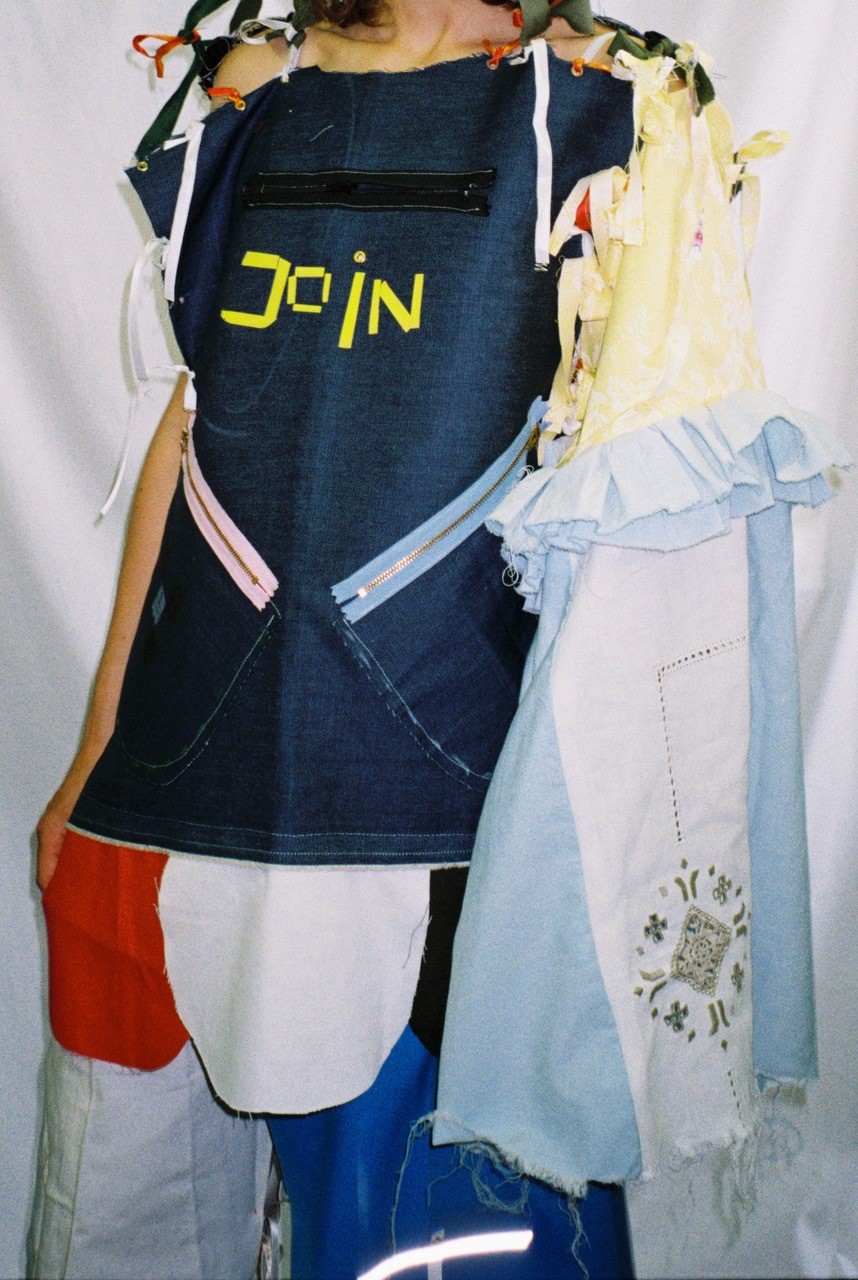
4 minute read
Dossier - Fashion and sustainability
Turning the current fashion industry into something more sustainable and caring is an important theme for ArtEZ, from the Fashion professorship to the bachelor’s course in Fashion Design and the master’s course in Critical Fashion Practices. Today’s industry is led by too much exploitation and pollution, while the world needs sustainable alternatives — now more than ever. In this dossier we share the way students and researchers at ArtEZ are working towards a different, more sustainable fashion system, using both fashion design and critical thinking.
Towards united fashion systems
Daniëlle Bruggeman, professor of the Fashion Professorship, studies the alternative approaches to the current industrial fashion system within her professorship. She organised an international conference in 2022 titled ‘Ways of Caring — Practicing Solidarity’; a quest for alternative fashion systems and solidarity-based ways of making and wearing clothing. “We notice a great movement happening inside a new, more critical fashion discourse: there’s a desire for more solidarity with each other and with nature.” With the project ‘Solidarity in Fashion’ the professorship works with various designers, collectives and organisations towards a future with solidarity, empathy, connection, agency, wellbeing and solicitude as central values.
A catalyst for change
According to Daniëlle, the corona crisis was one of the drivers of this ‘solidarity shift’: “When the corona crisis was just starting, major Western fashion houses canceled their orders at the factories. Many people lost their jobs or continued to work for extremely low wages. This called for solidarity: from NGO’s who fight for wages to researchers and people in the industry. It raised questions for a lot of people in my field: what exactly is solidarity? And how can we, as both researchers and people who wear clothes, be in solidarity with the people who make these clothes? This was an important reason to develop more research for solidarity, and ultimately the conference ‘Practicing Solidarity’.” ■
Sustainable fashion is more than organic clothing
Within the Critical Fashion Practices master’s course, sustainability permeates the curriculum. To some extent we all are aware of the importance of sustainability, but what does sustainability in fashion really mean? For Chet Bugter, head of the master’s course, sustainable fashion is more than a t-shirt made from organic cotton.
Like professor Daniëlle Bruggeman, he thinks the whole fashion industry needs to be revamped. “The current, industrial fashion system is based on exploitation of people and nature. Together with our participants[1], we seek alternatives and try to develop a more just and critical approach to fashion,” Chet explains. In this quest, anti-capitalist, anti-neoliberal, decolonial and feminist perspectives are crucial. During the master’s, students explore the significance of these concepts in our everyday dealings with fashion, clothing and identity. ■
[1] In the master’s course in Critical Fashion Practices, students in the course are deliberately referred to as participants. By doing so, the master’s course seeks to reduce the hierarchy between the lecturers and students.
Craft sustainability
Fashion is here to stay and fashion design is a real craft. Which is why the bachelor of Fashion Design puts craftmanship first. So, sustainability in this context means keeping the fashion craft resilient. There are all sorts of ways of being sustainable in fashion design: use of materials, packaging, up- or recycling, quality and wearability. While studying, many designers and collectives already focus on sustainability, from Michael de Geus to The Patchwork Family. The course devotes specific attention to this aspect.
Alumnus Michael de Geus illustrates the focus on sustainability:
Wearability
In his designs, Michael pays specific attention to the wearability of the clothing. My collection contains several items that can be transformed by the wearer. In this way a person can wear the same item in several different ways, making it suitable for multiple situations.”

Beeld: Aldo Buscalferri | JOIN piece with contributions from Thijs Beckers, Iris Ebel, Charlie Winkel & Timia Rugenbrink.









